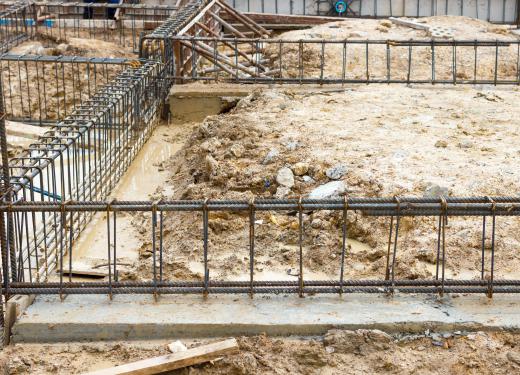Bar bending is the manufacture and bending of the steel reinforcing bars and beams, also known as rebar, used as reinforcement in concrete construction. Bar bending has a variety of different scientific measurements associated with it, often referred to as the bar bending schedule. This gives the manufacturers the proper bends and tensile strengths of the steel required to make certain shapes or other concrete constructions that are required. This industry is one that is busy when times are good and the construction of large capital improvements using reinforced concrete is booming.
There are a number of different techniques used in bar bending and a number of strict rules that must be followed. A bending schedule, in particular, is one set of rules that must be followed whenever the task is performed. The bending schedule is a list of specifications and reinforcement information that manufacturers must follow as they are constructing the various pieces the builder has requested from them in order to meet building codes. Each country can set its own bending schedules or specifications depending on the quality of materials available in that particular country. Following the bending schedule ensures that the proper materials are used to avoid bridge collapses, construction failures, and other issues.

There are a number of different tools used, also. These include hydraulic benders and manual benders that allow individual workers on the job to bend something to specification as needed. There are also complex industrial bending and cutting machines that manufacture custom pieces under strict observation and adherence to detail.
The technical specifications of reinforced concrete dictate where the bent bars need to be positioned and how many bars need to be positioned there. These specifications are written based on what is needed to perform a certain task, hold a certain load based on where the concrete is in the structure, and hold up to a certain pattern of use. For example, in bridge building, estimated vehicle traffic and longevity of the concrete are considered to be key when determining what reinforcement is necessary.
Bar bending and the bending schedule are part of a huge industry. It provides an important measure of safety for construction. The industrial engineers and mechanical engineers working to perfect bending schedules to make reinforcements even stronger are one of the engines that keep societies all around the world moving forward with construction projects.
